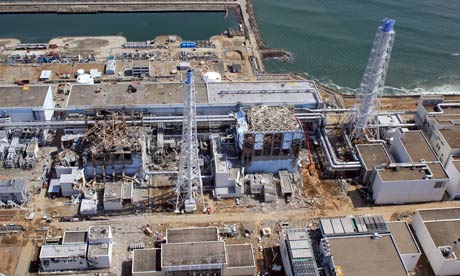But Mr Noda's optimistic assessment appears to have been premature. Nuclear engineer and former power company executive Arnie Gunderson compared the prime minister's statement to President George Bush declaring "mission accomplished" on the deck of the USS Lincoln in 2003. Gunderson calls the situation at Fukushima "a long battle, far from over."
Even Tokyo Electric Power Company (Tepco), which owns the Fukushima facility, says that it will take another 40 years to fully decommission the reactors there, a project which poses unprecedented engineering challenges. But the company's own tests disclose a more immediate danger. Rising radiation levels within one of the reactors, the highest recorded so far, and evidence of a leak in the critical cooling system demonstrate that the situation is still far from stable.
Tepco revealed at the end of March that protective water levels in the containment vessel of Reactor No 2, were far shallower than they had expected, which might mean that the uranium fuel rods there are no longer completely submerged, and are heating up. The Japan Times reported on 29 March that radiation inside the vessel has reached 73 sieverts per hour – high enough to administer a lethal dose to a human in a matter of minutes, even to disable the robotic devices which are sent regularly into the reactor to monitor what is happening there.
Conditions elsewhere in the plant are more difficult to assess. Reactors 1 and 3, both of which melted down after the earthquake and tsunami last year, are currently sealed and impossible to enter, even by robots. So we don't know what is going on inside those crippled structures.
But nuclear experts say that their biggest concern involves Reactor 4, which sustained severe structural damage during the earthquake and subsequent hydrogen explosions which collapsed its roof. This is where hundreds of tons of spent fuel sits perched 100 feet above the ground in a cooling pool exposed to the open sky.
A report released in February by the Independent Investigation Commission on the nuclear accident called this pool "the weakest link" at Fukushima. Robert Alvarez, former senior policy adviser at the US department of energy said: "If an earthquake or other event were to cause this pool to drain it could result in a catastrophic radiological fire involving nearly 10 times the amount of Cs-137 released by the Chernobyl accident."
How likely is this? While the structure of Reactor 4 is stable for the moment, the Dai-ichi plant lies miles from a big earthquake fault – as large as the one that caused last year's quake, but much closer to Fukushima. According to a study published in February (pdf) in the European Geosciences Union's journal Solid Earth, that fault is now overdue for a quake.



0 comments:
Post a Comment